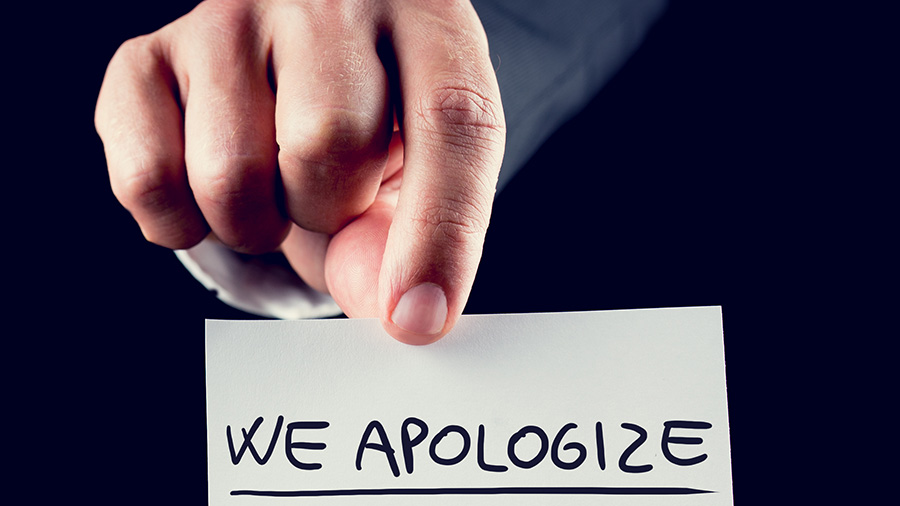Let’s face it, sooner or later your company will deliver a poor customer experience. It’s okay. It really is. Well, as long as it’s not the norm, right? Embracing this fact will help you sleep at night. So if the experience does fail somewhere along the customer journey, make sure you have the right tools to act quickly to ensure you retain that customer. As importantly, make sure all of your employees know what the service recovery process is and have the skills, motivation and empowerment to execute. If you do these things, flawlessly, you will create customers for life.
Before we get into how to create a service recovery model that creates lifelong customers, let’s quickly revisit why service failures happen in the first place, because it’s important to understand the past in order to fix the future.
Back in the 1920s, Total Quality Management was invented with the advent of statistical modeling to improve quality. The Japanese took this further in the 1940s, before it became all the rage in the United States. If your company joined was around for that and joined this movement, you likely have a harder time with service recovery than most; think big institutions like banks, insurance companies, telecom providers, and airlines. In their effort to produce a zero-defect environment in service-delivery systems to minimize their costs and enrich shareholders, they created policies and procedures so employees can execute against rote work. I don’t blame anyone for this, but it’s also the reason why you hear, “that’s our policy, sorry” every now and again.
Now, all of these policies and procedures are also the reason why there are high standards of service these days. It’s just that those standards fail every now and again. So while service-driven companies adopted manufacturing-style approaches to their work, they don’t have inputs and outputs like manufacturing per se; hence, variation the wrong way will cause customer dissatisfaction.
So, with this background in mind, what’s a service-oriented company with manufacturing-style systems to do? The answer, frankly, is rather simple. But as anything, it’s in execution.
- Make sure that measurement precedes management. What do I mean by this? I recently had a terrible service experience with my cellular provider; I was a 25 year customer. I was on hold or in an unhelpful conversation for about 60 mins. 25 years is 13 million minutes and this cellular provider couldn’t do that math even though I was telling them I would walk over 60 mins I just gave them. Same with fees. Don’t let a $25 late fee get in the way of a customer who pays you significantly more each year for the privilege of your product or service. In short, consider how much it costs to lose a customer; is the 60 min phone call, which probably cost the cellular provider $50 worth losing a loyal customer whose paid tens of thousands in service costs?
- Collect the dots to connect the dots. Don’t just let “complainers” drive your business. You have to be proactive in finding problem areas. To do this effectively, you need all the help you can get. Create a platform for employees to suggest areas of improvement – whether it impacts the customer or their ability to do their jobs effectively. And reward people for doing so; a simple thank you to them and their manager often suffices. Also, consider giving your customers service credits for every idea they give you to improve service that can be acted on; easier said than done you say? Perhaps, but at the very least take all of the suggestions via surveys you received and let customers know what you improved given all of their feedback.
- Anticipate service recovery. Do you know which areas of your company have higher volume than others? Perhaps some processes are more manual that you would like? Or that some experiences require higher-order thinking from your staff and your customers? So many companies can relate to this; and they’re a hotbed for ensuring you have a sound service recovery model in place. Want to know who does this well? Singapore Airlines has a “Top 10” reasons why service fails in flight and what to do about it right in the galley. That requires a lot of research, and motivation from the crew to deliver, doesn’t it?
- Treat the customer fairly. Often, customers will get a $25 service credit or some other form of compensation for their issue. While that is certainly a nice thing to do, you may never have to do that. Often, customers just want to be treated fairly; and that doesn’t mean making a financial decision. I used to have a boss who used to say, “Focus on doing right, not being right.” It took me a while to figure this one out, but all he meant to say was do the right thing, not what the policy tells you to do. So if you’re not working flexibility into your processes, now is the time to start and empower your employees to do the right thing.
- Don’t just train employees, given them tools. While your training program hopefully has real-world scenarios that employees can immerse themselves in to truly grasp the issue, think about the tools they should have at their disposal too. There are a lot of sophisticated and affordable solutions out there that support everyone from your Sales teams to your Contact Center Agents. New artificial intelligence capabilities can tell you, in real time, if you’re using positive language or how upset your customer is getting; this allows you to adapt your style quickly and even avoid the service failure.
- Offer 2 – 3 fair solutions and let the customer choose. While it’s important to empower your employees to fix the problem, it’s equally important to empower your customers and make them feel part of the resolution process. There is some psychology here of course, but letting the customer take control of their issue gets them to a better place quickly. Just make sure that what ever solutions you put in front of the customer, all of them are fair. If someone feels like you’re backing them into making a decision, you will quickly erode trust!
- Act quickly. Once you’ve agreed to a solution, the best time to act is with the customer on the phone. It’s one thing to say, “You’ll see the credit on your next billing cycle.” It’s a completely different feeling for customers when they receive an email or text while on the call with the resolution firmly in hand. I don’t care who you are, immediacy wins every time in service recovery.
- Thank them for being a customer. This one is too often forgotten, but reminding customers they are special and thanking them on the call is critical. You are only in your seat because of the customer, and letting them know you know that will not be lost on them.
- Close the loop. This one is simple: if you can’t resolve the issue while on the call, let the customer know that, and let them know who you are forwarding it to for resolution. If you know how long it will take them, share that too. You don’t have to state your internal SLA, but even something as simple as, “We should get back to you within 48 hours” will do. Once resolved, get back to the customer within the stated time frame. Call, email or text them based on their preference, but follow up.
- Keep the line open. That cellular provider I mentioned previously? One of their customer experience employees DM’d me personally, and said to contact them if I had any additional concerns or issues. That was huge. They’re keeping the line open. More importantly, they won’t have an embarrassing post on social media to contend with as I have someone to go directly to. Well executed in my opinion.
So what do your service recovery programs look like? Have anything to add?
I hope you found this post a little bit useful and it helps you get a little bit better each day!

